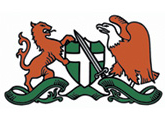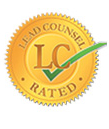Being a victim of a car accident is not pleasant at all. Your priority after an accident is seeking medical treatment and for your passengers as well. After that, you can claim compensation from the at-fault driver. The compensation process is quite challenging and can turn against the expectations of the victim if one is not careful enough. Los Angeles Car Accident Attorney guarantees credible legal services to anyone claiming compensation after a car accident in Los Angeles, CA.
California Laws in Car Accident Compensation
In California, several laws govern how a victim can claim compensation after a car accident. These laws are put in place to ensure that the settlement is fair. Here is a detailed view of the rules that govern car accident compensation in California.
Tort Law
The California Tort Claim Act (CTCA) is a California Legislature law intended to protect the state government from any liability in personal injury claims. Under this law, a public entity is not liable for any injury caused by the public body or its employees. This is referred to as sovereign immunity.
Nevertheless, the law carves out in specific limited expectations, which puts the state of California liable for personal injury claims. There is a limited exception that is considered when one wants to recover damages from the state government.
Under this Act, the government can be held legally responsible for the personal injury damages in particular situations. These situations include:
-
Negligent actions of the employees
-
Negligent actions of independent contractors
-
Liability in government property, and
-
When a public entity fails to consider out the duty imposed by the law
Generally, a government entity or agency is responsible for the personal injury claim. The Act applies to the local government agencies, departments, municipality agencies, and counties.
When a government employee is liable for the acts of its employees or independent contractors, the respective person should be working within the scope of the employment and must be undertaking a government function.
Time Limits for Filing Claim Under the California Tort Claims Act
There are strict guidelines that have been set forth by the California Tort Act. If a claimant does not consider these rules, the at-fault government agency will dismiss the claim. Also, if the claim is submitted late, it will be rejected.
The statute of limitations that applies in a claim under the Tort law is six months after the injury. However, the claimant can spend more than six months, depending on the date of discovery of the injury.
Pure Comparative Negligence Rule
California follows a pure comparative negligence rule. In this rule, the plaintiff gets awarded for damages according to the fault of the defendant. Therefore, if the at-fault party is 100% liable for the accident, the victim gets 100% of the damages that result. However, if the victim contributes a specific percentage to the accident, he or she will be liable for the percentage contribution of the defendant.
For instance, if the defendant contributed 80% to the accident, the plaintiff has a 20% liability of the accident. In that case, the plaintiff will only recover 80% of the damages during compensation.
Determining Fault in Comparative Negligence Rule
The jury or the judge usually decides on the plaintiff’s comparative fault. In a comparative negligence jury, the jury gives a statement that states that the alleged at-fault party claims that the plaintiff contributed to his or her injury through negligence. Therefore, the at-fault party must prove that the negligence of the plaintiff and the plaintiff contributed a significant factor in causing his or her harm.
If the alleged at-fault party can prove those factors, the damages of the plaintiff are reduced according to the percentage responsibility of the plaintiff. Also, if the fault is being divided among various defendants, the total amount of the expenses should amount to 100%, if the plaintiff’s and non-parties responsibility is considered.
After that, the jury will calculate the total damages of the plaintiff if there are any. The jury will decide on the total amount of the expenses without considering the percentage responsibility of the plaintiff.
Proposition 213
In California, not every person injured by a negligent driver can fully collect their compensation. California voters passed Proposition 213, or Prop 213, that determines whether or not an uninsured driver can receive compensation for an accident that is not their fault. Although the driver is unable to collect general damages, this does not apply to the driver’s passengers. Despite the lack of liability insurance coverage, the passengers are not barred from general costs in Proposition 213.
On the other hand, the uninsured driver can still get compensated for the medical bills and expenses that result from the injuries that result from the accident.
This law is meant to punish a driver since he or she does not show any consideration to other people by failing to get liability insurance coverage. The only exception that might apply would be a situation where the subsequent injuries resulted from DUI. The reason behind this consideration is that the person responsible for the accident was more reckless compared to the uninsured driver, and it would be fair to punish him or her.
Other exceptions that occur when:
-
When a car operator was driving an uninsured vehicle of his or her employer
-
The accident happened in a private property
-
The car’s owner did not have any insurance, but the driver who borrowed the vehicle had insurance for another car. In such a case, the driver is considered to be insured and should take responsibility for the damages.
Statute of Limitations
A statute of limitations is a law that sets a limit of the period that you have before you file a lawsuit over some loss or harm. Under the California Code of Civil Procedure 335.1, a claimant has a two-year deadline to submit action for injury or death after a car accident.
Please note, the statute of limitations starts to run after the accident. However, if the victim died as a result of the accident, the claimant has two years to file the lawsuit. If you are pursuing compensation for the damages of your vehicle, California Civil Procedure section 338 provides three years to have the case filed against the at-fault driver.
If anyone tries to file the case after the given period is done, the court will undoubtedly refuse to consider the matter, unless it falls under a rare exception which makes the timeline to be paused or extended.
The first exception that would cause an extension of the time limit is a situation where the victim is a minor. In such a case, the statute of limitations will not begin until the minor reaches his or her 18th birthday.
The second exception would be the discovery of the injuries related to the accident. Some injuries are not discovered immediately after the accident and might take months or years. Such a situation might be hard to prove since a late discovery of injuries might be associated with past incidences. That’s why your car accident attorney should review your case to link your injuries with the accident successfully.
Damages Involved in California Car Accident
Whenever a claimant is claiming compensation from the at-fault party, he or she must establish the kind of damages that are incurred as a result of the accident. In law, costs can be defined as the money compensated for loss or injuries that results from wrongful acts of another person. Recovering the damages is the objective of most car accident lawsuits. The kind of damages that one can recover from a car accident can either be compensatory or punitive.
Compensatory damages are those types of damages that a victim or claimant is eligible to collect, while punitive damages include a unique type of damage meant to punish the wrongdoer. Here is a short description of the basic types of damages that a victim can recover.
Medical Expenses
This kind of damages marks the highest percentage of car accident damages. Medical expenses include all the costs incurred when undergoing treatment for your injuries. Medical expenses cover a wide variety of costs, such as physical and mental therapy, ambulance fee, consultation, in-home care services, and future medical costs.
Pain and Suffering
Pain and suffering can be legally defined as the mental or physical distress that one seeks in a car accident lawsuit. These damages rely on the type of injuries, severity of the pain, and the prognosis of future pain associated with the injuries. They might also include emotional or mental distress that might arise from the incident, such as stress or anxiety.
Lost Wages
Injuries incurred from a car accident may lead to the loss of earning capacity of the victim. This results from the inability to work due to the time spent in a hospital, problems with mobility, physical therapy sessions, and other factors. You must prove all these factors if you want to be compensated for the wages that you have lost.
Loss of Affection
If you are married and a car accident injury renders you the ability to show affection to your partner or family members, you are eligible for compensation by the at-fault party. This kind of damage also includes the inability to participate in an intimate relationship with your partner. All these are referred to as loss of consortium.
Wrongful Death Claim
If your loved one dies as a result of an accident, the surviving members are eligible for compensation from the at-fault party. In a wrongful death claim, the surviving family members are eligible for compensation if the deceased person had a harmonious relationship with the plaintiffs, the impact of the damage to the surviving members, and the living arrangement.
Punitive Damages
As described above, punitive damages are a type of award that a victim or claimant can get as a way of punishing the perpetrator. These damages are rarely awarded and are only considered if the victim or claimant can prove that the at-fault driver’s actions were of gross negligence and show disregard for the safety of others.
Compensation for Auto Accident in California
Once you have been injured in a California car accident, it is natural to determine to want to know about the average car accident settlement that you can get. An accident can catch you completely off-guard and leave you with financial losses, although the fault was not yours.
Several factors come into play when determining the amount that you need for your settlement. The more significant your injuries, the more devastating are your chances of obtaining more substantial compensation. Settlements can be agreed upon through an insurance benefit or by filing a civil lawsuit.
Settlement Through Insurance Claim
If the other driver caused the car accident and has automobile insurance, the amount that one can get is limited according to the driver’s policy. The average settlement in a California car accident is $21,000.
Under California laws, every driver must possess insurance. At a minimum, one should carry a minimum of $15,000 guarantee for one person, $5,000 for property damage, and $30,000 for injury for more than one person. The insurance coverage can be purchased through private insurance companies, or obtained through a program provided for low-income drivers. If a driver does not care about either of the options, he or she can put down a $35,000 deposit with the California Department of Motor Vehicles to get a certificate of self-insurance.
As discussed above, several factors can reduce the possibility of getting compensated depending on the maximum coverage that the insurance can offer. These factors are as follows:
-
Your Statement
The statement that you five in your claim process have a significant impact on the amount that you can get through a car accident settlement. The consistency of the information provided through the statement will determine whether you will get full compensation or not. You have to give information about the accident to the police officer, a doctor, and an insurance company.
It is hard to have similar information across the board, but the statements must be consistent to ensure credibility is adhered to. With credible information at hand, it will be easier to convince the insurance company on the happenings of your situation.
-
Strong Evidence that Shows Negligence
If there is little or no dispute connected to the other driver’s liability, such as in a rear-end collision, DUI, or distracted driver, his or her adjuster will have few disagreements when negotiating for your settlement. However, if they’re a lot of questions that come into place, there would be questions related to your liability, which calls for a lesser settlement.
-
Extent of Injuries
Sound medical records and reports that support your claim of the injuries can help you establish the extent of the injuries and your pain and suffering. They will help in proving your damages plus the testimony provided by expert witnesses.
-
Possibility of Pre-existing Injuries
If you had pre-existing injuries, it could be hard to prove to the insurance company about the association between the accident and your injuries. Although pre-existing injuries do not necessarily reduce your claim, it can cause the settlement to take much longer to resolve.
-
Police Report
The police report submitted after your accident might have compelling information such as a witness statement, the conclusion of the police officer, a statement that shows that the other driver was negligent. Such data can be persuasive while dealing with an insurance adjuster and support your value claim. The police report can also dismiss claims from the adjuster, stating that the accident did not occur.
-
Prompt Medical Care
If you sought medical treatment immediately after the accident, this increases the value of your claim. Failing to seek medical treatment promptly will allow the adjuster to argue out that the injuries are not as severe as they seem. Therefore, they will try to bring forth a lesser settlement.
-
Your Lifestyle after the Accident
You need to live a life that is consistent with your injuries to prove that you were involved in a car accident. Insurance adjusters can go to the extent of spying on you to show that you were performing activities that you cannot manage when injured just to disapprove of your claim. If they find any evidence that supports their investigation, this might end up affecting your demand.
Compensation if the At-fault Driver is Uninsured or Under-insured
Uninsured or under-insured is an option that falls under California laws. This kind of coverage pays for insurance when the at-fault driver does not have any insurance or does not have enough insurance to cover your damages.
The easiest way to be compensated for injuries and damages from an uninsured driver is by seeking compensation through your insurance company through an uninsured motorist coverage claim. Uninsured coverage usually covers and operates with the same limits you have in your policy. The uninsured coverage will cover the medical bills, cover lost wages, and economical expenses. It also covers non-economic costs such as pain and suffering.
Essentially, the under-insured coverage takes liability for the uninsured at-fault driver where they pay for your damages. This is agreed through a settlement, but the decision will not be agreed on as quickly as it would be in other types of compensation. That’s why it is recommendable to involve an attorney in your settlement negotiation.
Please note, you can only enjoy compensation if you possess an uninsured or under-insured motor insurance. If you do not have such coverage, you will have to file a lawsuit against the uninsured driver. This option is risky since most uninsured drivers have little money available if there is any.
Therefore, the court will resolve into setting up a payment plan that the uninsured driver can consider if they find out that the driver has some money. Running a credit check on the driver would be a suitable option since your attorney might request the freezing of the driver’s asset to recover the amount supposed to reimburse you.
How Damages Are Calculated in California
Once you decide to settle on the compensation through a lawsuit, your attorney must have a monetary value that determines the total expenses to be compensated by the at-fault party. It is easier to calculate economic damages since the costs are straightforward. However, calculating non-economic damages can be quite challenging since there is no monetary value to consider.
In that case, the attorney will have to establish several ways that you can use to determine the worth of your pain and suffering. There are generally two methods used to calculate the cost of pain and suffering. These methods include the multiplier and the Per Diem methods. Let’s have a closer look at these methods.
The Multiplier Method
With the multiplier method, a total of your economic damage will be calculated and considered as the base figure. Then, a multiplier is selected to determine the cost of your pain and suffering. The multiplier usually ranges between 1.5 to 5. For instance, if your total economic expenses are $10,000, and the multiplier is 2, the total cost of your pain and suffering will be $20,000.
The Per Diem Method
With this method, the dollar figure of your pain and suffering is determined by a pre-defined everyday expense. For instance, if the Per Diem selected is $100, and it takes 100 days to reach maximum medical improvement, then the cost of your pain and suffering will amount to $10,000.
Please note, under California Civil Code 3333.4, uninsured drivers may not be able to bring their pain and suffering.
Find a Los Angeles Car Accident Attorney Near Me
Seeking compensation after an accident is quite challenging. It involves a lot of professionals and tedious legal procedures to get compensated successfully. This cannot be achieved without the involvement of a professional car accident attorney. Los Angeles Car Accident Attorney offers credible legal services to anyone claiming compensation after an accident in Los Angeles, CA. For more information about us, contact us at 424-237-3600 for a case evaluation.






